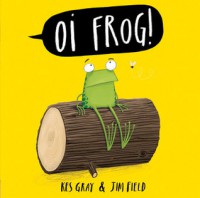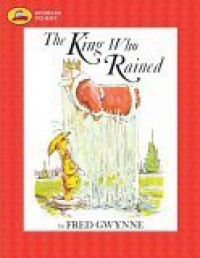You Can't Buy Happiness But You Can Buy Books!
Reading gives you a place to go when you have to stay where you are!
Drawing Conclusions
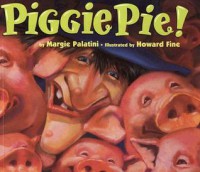
I could use this book to have my students draw conclusions about what is going to happen next in the story. Children love this book and the illustrations are great. While reading, I would stop and ask the students what they think will happen next based on the text and illustrations. This book can be used Kindergarten classes (Read aloud)-5th grade.
"don't cry over spilt milk"

Children need to learn to use language creatively and not to take things so literal. This is a good book to introduce them to idioms. Being from the south, I heard a lot of idioms growing up and that is how I learned them. I remember being little and my dad saying that he could remember when I "was only knee high to a grasshopper." I remember thinking, I was never as small as a grasshopper so I decided to talk to him about it. He explained it to me and from then on, I would question his meanings, but I soon caught on. Students can use a poster to highlight the literal and figurative meanings of words. This would be a good book to start with your second graders.
Really! The Last One! Homonyms!
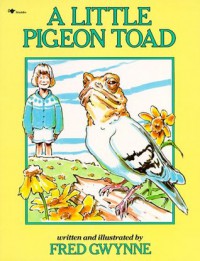
The title speaks for itself! I love it! A Little Pigeon Toad, get it? I thought it was hilarious! Kid would definitely enjoy reading this book and deciphering from the different homophones.This book would be a great resource if you are going to teach a lesson on homonyms. Second grade would be ideal for this book. Have the children make a their own book of homonyms using the ones from the text.
Convention/ Using Visual Clues
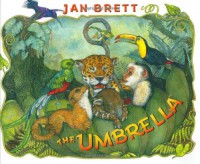
This book is a great way to show the conventions of writing and for the children to use the illustrations to infer and predict what will happen next and what has happened. Also, this book would be fun to learn about animals in the Costa Rican jungle. The students could have a template of an umbrella and tell their own story by illustrating it. I would put their beautiful drawings on display until we move on to another topic or another trait. This book can be used for any grades K-5.
Punctuation/ Excerpts
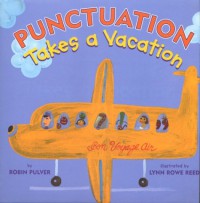
This cute book would be great to incorporate writing and learning about punctuation. During reading, the children can see how important punctuation is in a sentence or even a whole story. When punctuation takes a vacation, the meaning of our sentences can be completely misconstrued. People will not understand what we are saying unless we use correct punctuation. After reading, you could take excerpts from familiar books and remove the punctuation. Have the children figure out what is missing. This would be a fun group activity and could get the kids to discussing about punctuation and why they are important. This could be a first, second, third, fourth, and even possibly fifth grade book!
Poems/ Sentence Fluency

This super cute book is about a fly that goes on an alphabetic rampage until he is finally stopped by a fly swatter. This book has great rhythm and flow so it is a popular read aloud book. After reading, the children can come up with their own imitative poems. Give the students a topic and let their imaginations take care of the rest. You could even "jazz it up" by providing the students with a fun fly template to write their poems on and once they are complete, hang them for everyone to see. This book is great for first, second, third grade. You could even just use it as a read aloud to kindergarten.
Alliterative read aloud

Not only is this book great for learning about alliteration, but this book is also fun to read! The kids will have no problem staying engaged with this book. You could even incorporate alliterative writing with this book. The kids would love to come up with their very own alliterations. After reading this book, give the kids a piece of paper and model for them by coming up with your own alliteration and posting it to the board so they can follow by your example, but I think this activity will be a lot of fun and the children should only need a little guidance because who doesn't like to come up with funny alliterations? I would recommended this book for a first to second grade class. We could probably even stretch that and say 3rd grade, too.
Tongue Twisters/ Alliteration

This book is great to integrate phonemic awareness and writing! It is a fun read aloud, but at the same time the children are learning what alliteration looks like and sounds like. The word choice in this book is so much fun for children. This book is also recommended as the trait 4, which is word choice. This book would be great for a first grade 2nd grade class.
First-person/ Narrative

How cool would it be to hear the perspective of a teenager living in medieval England? I think it would be fascinating! This book would be great when pointing out a narrative in text or point-of-view in writing. After reading the book, the children could write their own short narrative but tell it from a medieval point-of-view. You can integrate reading and writing with this wonderful book! This book would be good for a 5th grade class.
Oganization

This particular book is great to use when introducing organization of a book or writing. The parts of the book are easy to distinguish for beginners. The beginning, middle, and end of the story are easy to pick out. It is also the trait number two from an author's craft. It will help the children in their writing and it will help them be able to locate the main idea. This book is recommended as a read aloud for maybe a 3rd grade class.
WORDS! WORDS! WORDS!

This super cute book can be used to introduce children to new words. Also, this book can be an awesome way to introduce new activities. I could possibly make our own word jar for our class! Why not? If they are learning and having fun at the same time, let's do it! This book would be good for any grades K-5!
Word Play/ Informational Text

This book will help my children gain a better sense of words having more than one meaning. For example, foot in the book is used as "He sat at the foot of the tree." Children need to know that the word used in the sentence is not an actual foot, but is referring to the bottom of the tree. Furthermore, as we gain knowledge about words and their meaning used in the text we are also gaining knowledge about the rain forest. How exciting! This book would be great for a second grade class, possibly even first grade.
Comprehension Strategies
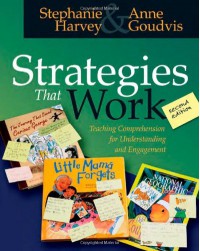
This book would be for instructional purposes only. It will help guide me to helping my children with their reading comprehension. Call it a self-help book if you must but this one is mainly for the kiddos too. They will not be reading it, but they will be gaining knowledge from it when I use the comprehension strategies that the book has. I cannot wait to try some of the strategies! Of course, this book would be for all grade levels.
